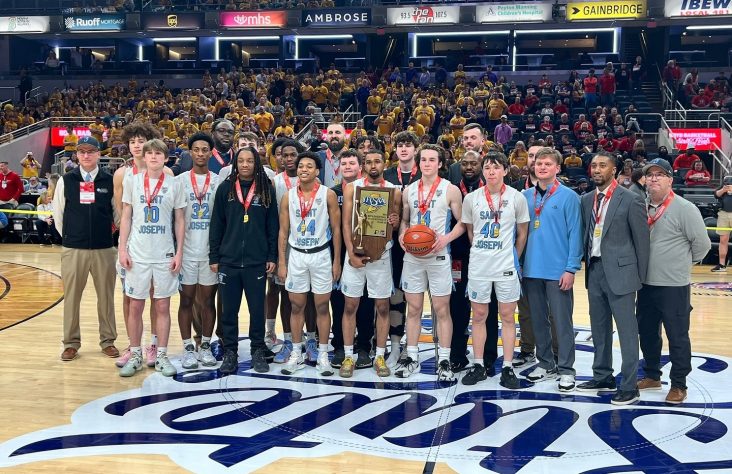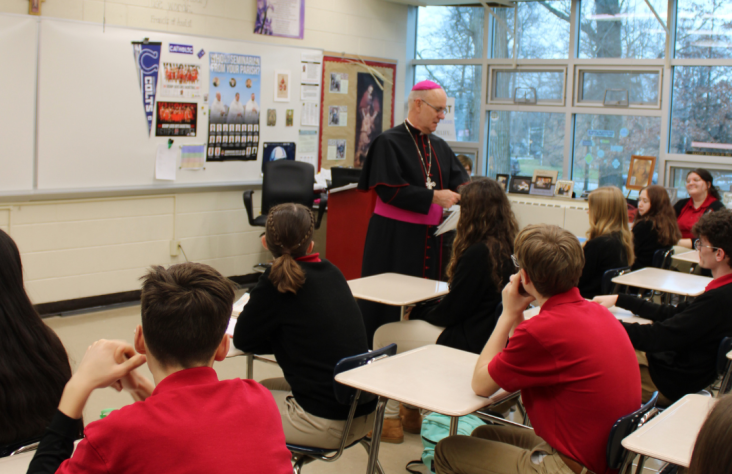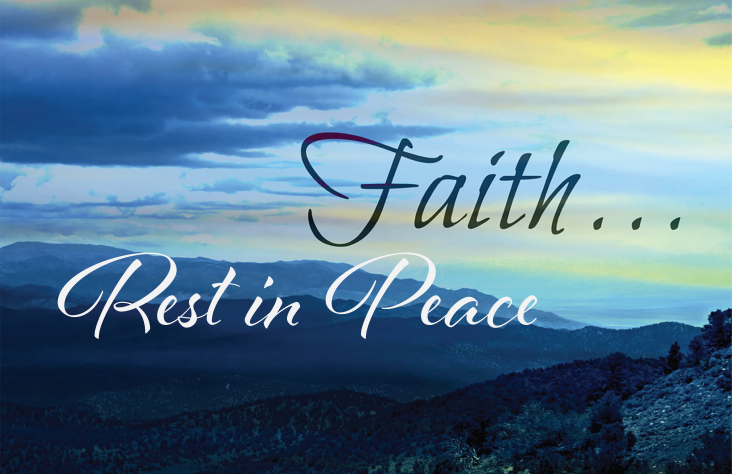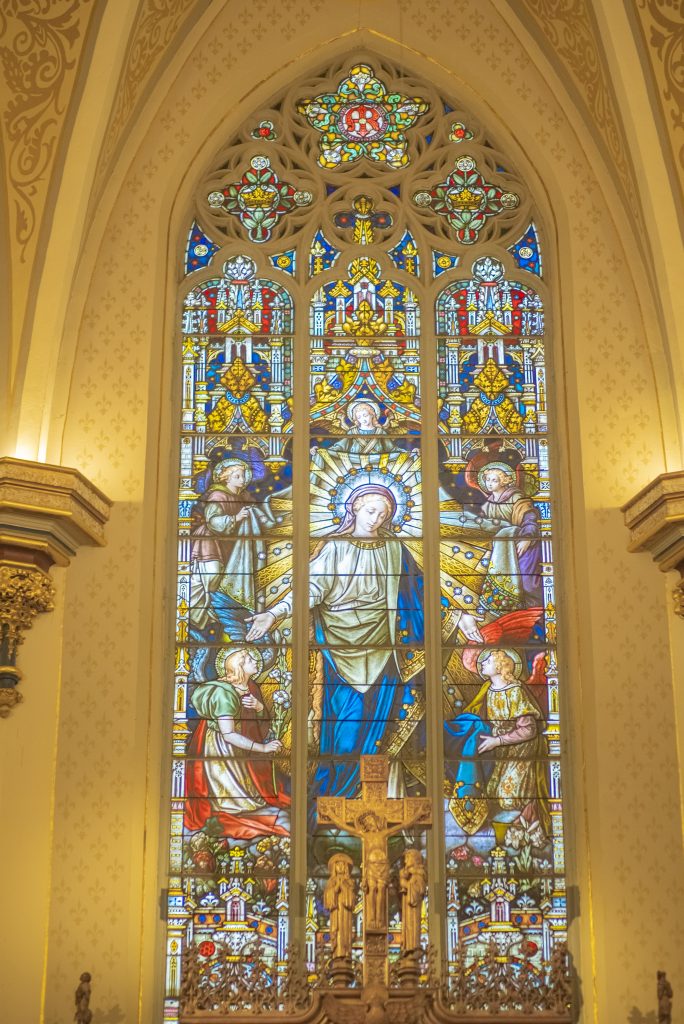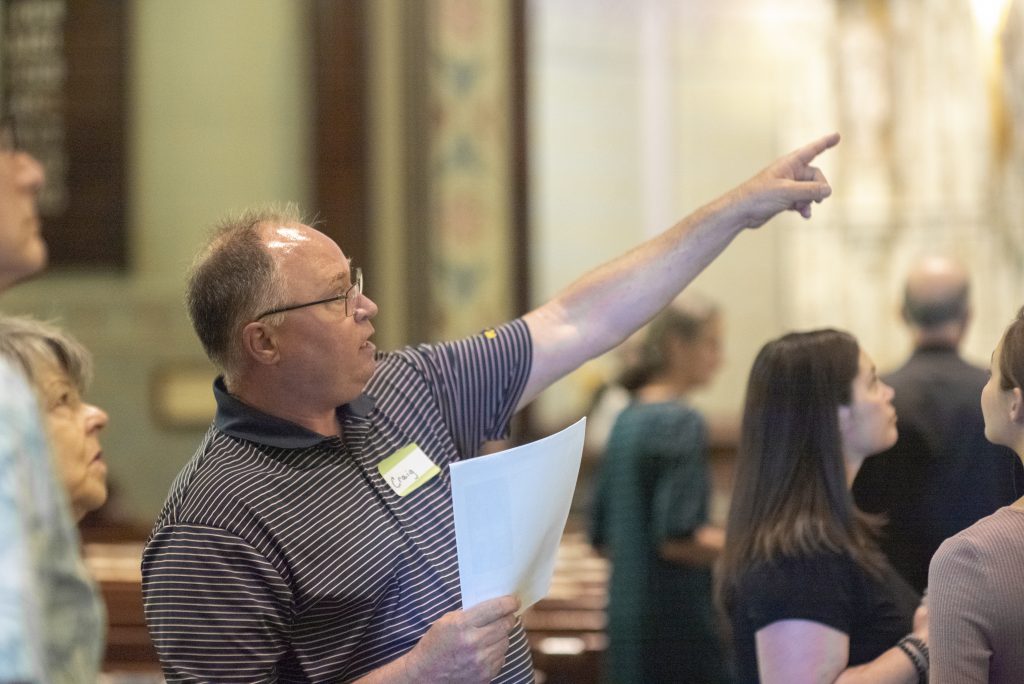May 17, 2022 // Diocese
Residents participate in city-wide church tour
Residents of Fort Wayne participated in the First Annual Sanctuaries and Stained Glass Tour on Sunday, May 15.
Participants had the opportunity to explore a number of churches and Christian faith traditions with 12 participating locations around the city. Two Catholic parishes, the Cathedral of the Immaculate Conception and St. Patrick, participated as hosts on the tour.
A handful of people chose the cathedral as their first stop. Guides explained that the stained glass panels installed within the walls of the church each represent an event in Mary’s life. The largest, known as the Immaculate Conception window, rises above the reredos containing the tabernacle and depicts the Blessed Mother standing on an orb, clothed in the sun. A crown of 12 stars sits on her head, and she is shown crushing a snake representative of Satan. This is a visual interpretation of the passage in Revelation referring to Mary. The lily in the window represents her purity.
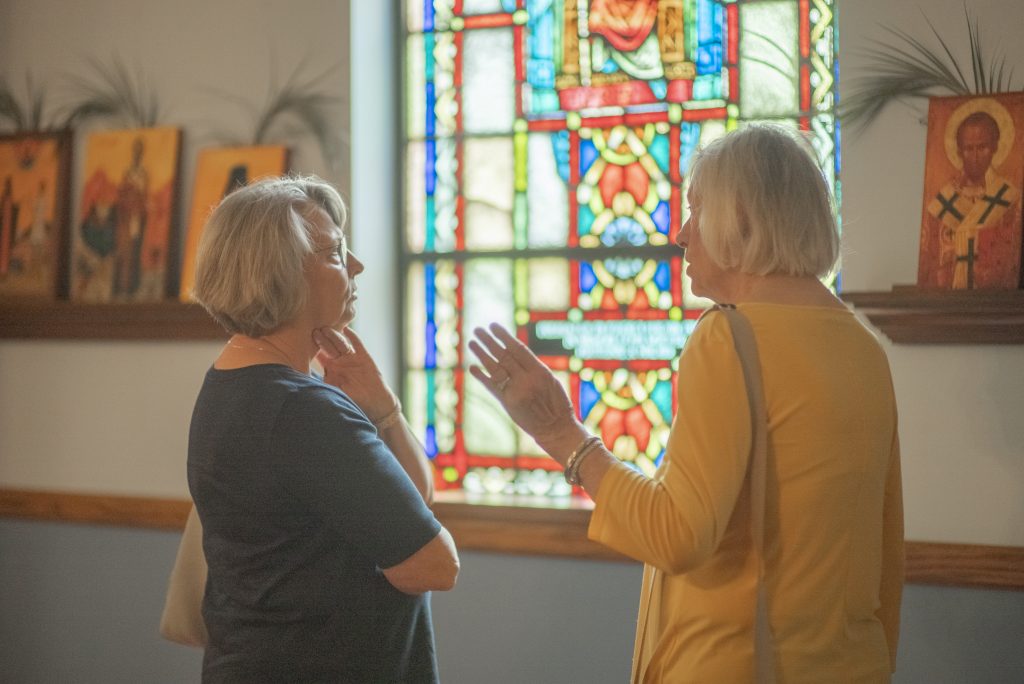
Photos by Joshua Schipper
Two women discuss the similarities and differences between the Eastern Orthodox and Catholic Churches at St. Nicholas Orthodox Cathedral in Fort Wayne. The cathedral was one of twelve locations that residents could visit on a city-wide stained-glass church tour on May 15.
Another church participating in the tour was Zion Evangelical Lutheran Church. According to the pamphlets handed to tourists, the building was constructed at a cost of $45,000 in 1891. A stained-
glass window at the entrance of the building on Creighton Street contains a German label that traces back to the congregation’s cultural roots in Germany. It reads, “Zions Evangelische Kirche,” which translated means “Zion Evangelical Church.”
Many Catholics would recognize similarities in the symbolism of the stained glass in Zion Evangelical Lutheran and their own parishes. The Greek letters “Alpha” and “Omega,” “IHS” – an abbreviation for Jesus – a sacramental chalice and even a dove are similar symbols that adorn both this Lutheran church and many Catholic parishes.
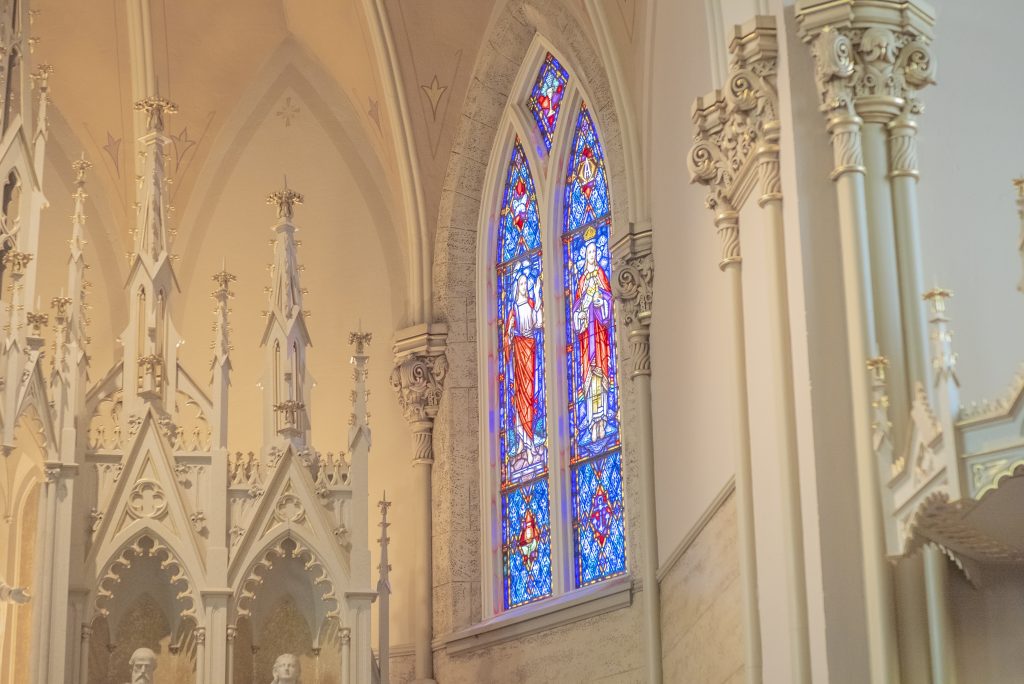
Stained-glass windows depicting Jesus replaced old “art-glass” windows at Zion Evangelical Lutheran Church in 1940.
Windows in the church also depict a baptismal font, the crown of thorns, a chalice with grapes and a cross. These windows were added along with a few others in 1940, and they replaced some of the original “art-glass” windows of the building.
St. Nicholas Eastern Orthodox Cathedral also participated in the afternoon tour. The walls of the church were adorned with icons. Behind the icons sat palm branches from the recent liturgical celebrations. The deacon there explained that the palms will stay behind the icons until next year when they are respectfully burned, similar to the tradition of burning palms in Catholicism. He also took the time to explain to several curious Catholics about the historical relationship between Orthodoxy and Catholicism.
Another stop on the tour was St. Paul Lutheran Church, which sits close to the Cathedral of the Immaculate Conception in downtown Fort Wayne. Stained glass adorns a significant portion of the building. Dr. Carl C. Fickenscher II explained much of the symbolism of the stained glass, as well as the origin of the word “nave,” which is nearly equivalent to the word “sanctuary” in Catholicism.
“This part of the sanctuary is called the nave, same root word as navy, and it goes back to Noah’s Ark, and the way God used the ark, a big ship, to save Noah and his family from the flood. And so the Church, very early on, has talked about the Church, and this part of the church, as the nave, as in the ship, in which God saves us from the effects of our sin,” he said.
He also explained that both sides of the nave are symmetrical to each other except for small symbols contained in each stained-glass window.
“In the book of Hebrews, it speaks of Christ as the anchor because it is Jesus’ death and resurrection that is our security for eternal life.”
He also pointed toward the symbol of Jesus as a sacrificial lamb in the glass on the other side of the church.
Fickenscher gestured toward another symbol in the stained glass. It contained two stick-like objects crossing through a depiction of a red heart.
“Jesus’ love for us is what sent him to the cross,” Fickenscher said. “The soldier then pierced his side with a spear.”
The other symbol in the window represented the sponge from which Jesus drank while he was dying on the cross.
“And they took kind of the ball from a hyssop plant, which was kind of used as a sponge in those days, and they dipped it in vinegar – soaked it in vinegar, and put it on a reed, like that pole there, and lifted it up for Jesus so that he took the drink from the sponge.”
The sanctuary and stained-glass window tour provided the opportunity for people of different faiths to learn a bit more about each other and the unique aspects of the many different Christian denominations that worship in Fort Wayne. It also highlighted the beliefs, symbols and beautiful architecture that many Christians of different faith traditions share with each other.
The best news. Delivered to your inbox.
Subscribe to our mailing list today.

